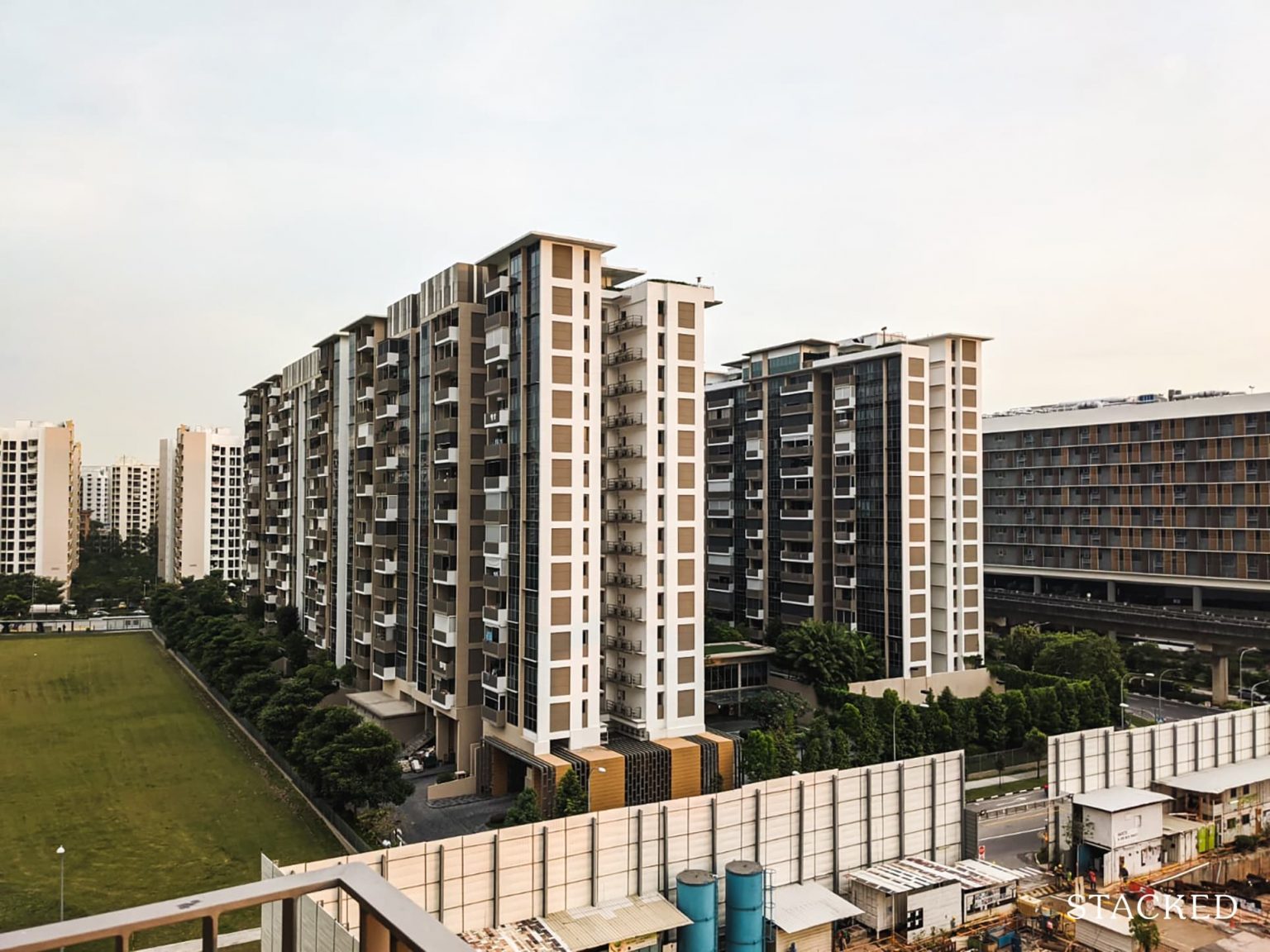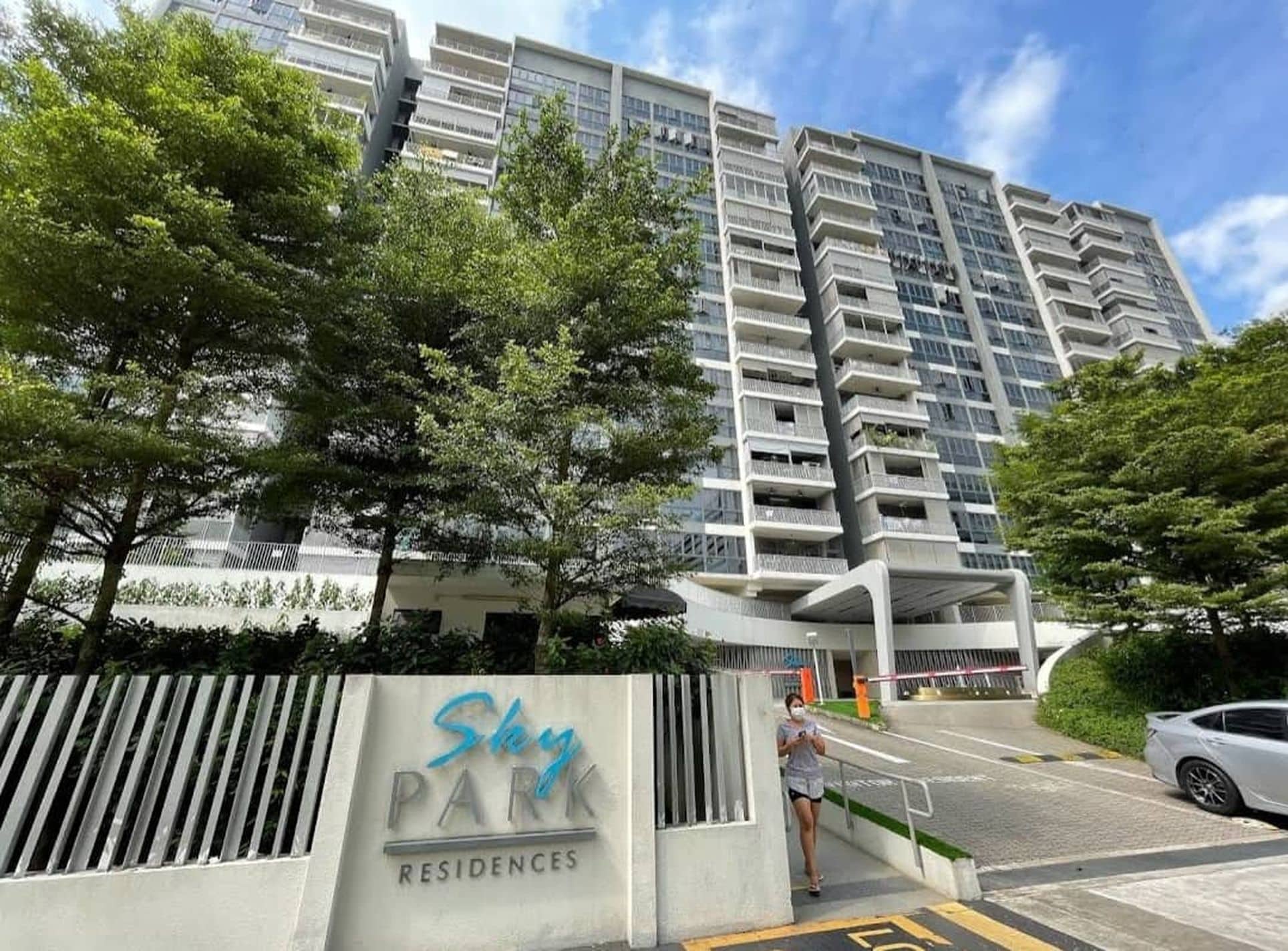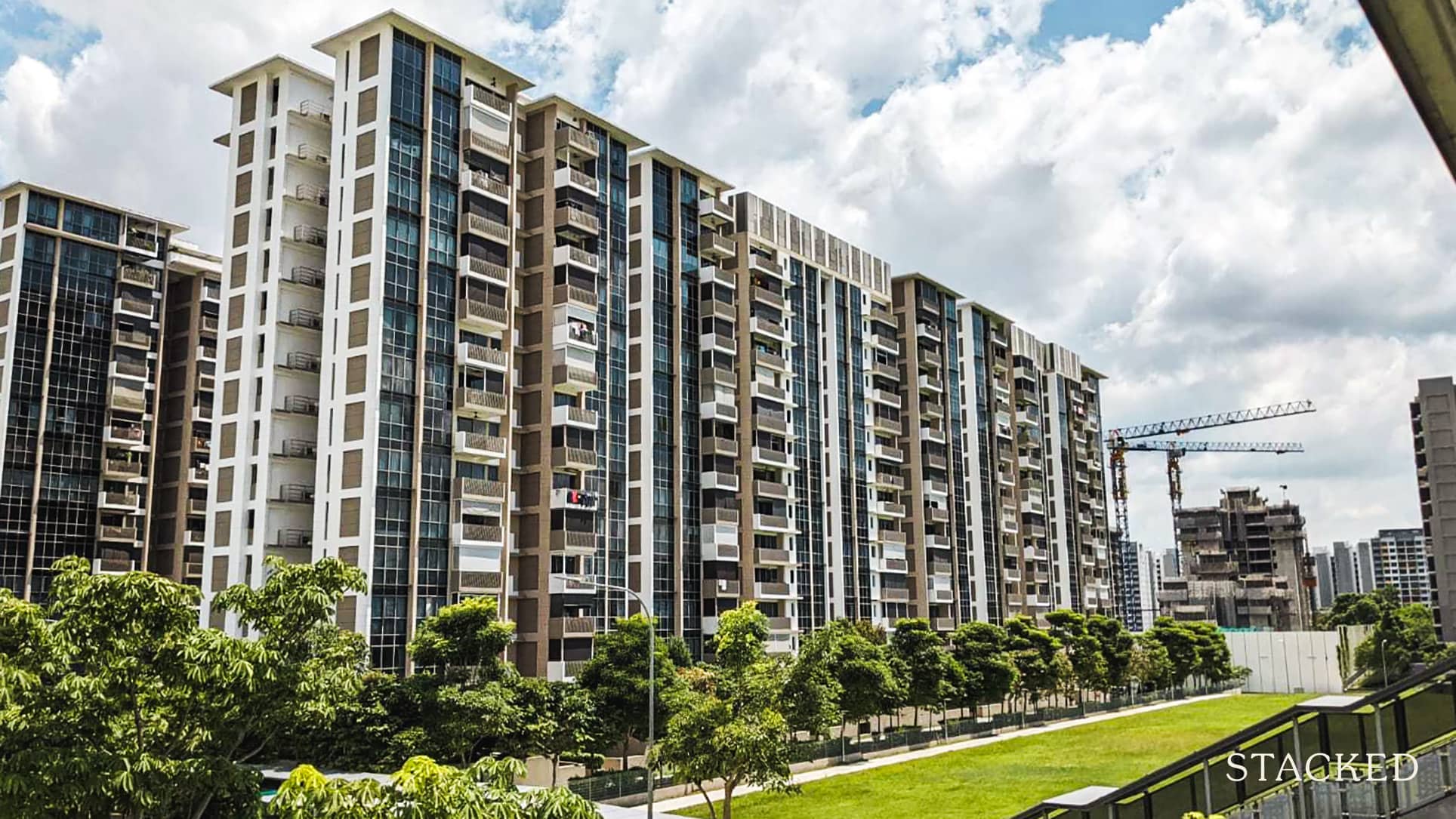Can Executive Condominiums Actually Be Unprofitable? 3 Interesting Points To Note From The Data

Get The Property Insights Serious Buyers Read First: Join 50,000+ readers who rely on our weekly breakdowns of Singapore’s property market.
A seasoned content strategist with over 17 years in the real estate and financial journalism sectors, Ryan has built a reputation for transforming complex industry jargon into accessible knowledge. With a track record of writing and editing for leading financial platforms and publications, Ryan's expertise has been recognised across various media outlets. His role as a former content editor for 99.co and a co-host for CNA 938's Open House programme underscores his commitment to providing valuable insights into the property market.
Last week we put out a list of the most profitable Executive Condominiums, that were sold right after the five-year MOP. Our plan was to put out a companion piece this week, on the least profitable ECs; and to be sure we have done that below. However, in compiling this list, we learned a lot of interesting details; and many of these may be important to note for those looking at purchasing an EC. Here’s what we found:
What are some of the least profitable EC transactions?
The following shows the least profitable transactions for those who sold right after the five-year MOP. To ensure it’s current enough to be relevant, we’ve isolated the list to ECs built and sold over the past decade. Here are some of the findings:
| Project Name | Sale Date | Transacted Price ($) | Buy Date | Buy Price | Quantum Profit | % Profit |
| Waterwoods | 22 Jun 2017 | $695,000 | 3/2/14 | $674,494 | $20,506 | 3.00% |
| Forestville* | 14 Dec 2017 | $771,877 | 26/12/13 | $743,040 | $28,837 | 3.90% |
| Skypark Residences | 15 Apr 2020 | $920,000 | 3/1/14 | $881,500 | $38,500 | 4.40% |
| The Vales | 18 Mar 2019 | $765,000 | 19/11/16 | $728,000 | $37,000 | 5.10% |
| Waterwoods | 28 Aug 2019 | $1,098,000 | 15/6/15 | $1,044,015 | $53,985 | 5.20% |
| The Amore | 7 Jan 2021 | $1,320,000 | 8/6/15 | $1,254,000 | $66,000 | 5.30% |
| The Amore | 25 Jan 2018 | $1,318,000 | 20/1/16 | $1,228,000 | $90,000 | 7.30% |
| The Amore | 10 May 2018 | $1,185,000 | 9/4/15 | $1,086,000 | $99,000 | 9.10% |
| The Amore | 21 Jan 2021 | $1,230,000 | 26/2/16 | $1,122,000 | $108,000 | 9.60% |
| Skypark Residences | 22 Jun 2018 | $940,000 | 2/3/15 | $855,000 | $85,000 | 9.90% |
| Bellewoods | 18 Dec 2020 | $949,000 | 19/12/14 | $862,000 | $87,000 | 10.10% |
| Westwood Residences | 15 Apr 2019 | $675,220 | 30/5/15 | $609,800 | $65,420 | 10.70% |
What we learned while compiling the list:
In general, there are strong positives for ECs; but there are many, less visible factors that can impact gains. If there’s one conclusion we can draw for certain, it’s that:
1. ECs over the past 10 years have almost never seen losses
Important note: we are not claiming that all ECs will never transact at a loss; only that there are no recorded losses among ECs which were launched and sold in the past 10 years. There may be losses among earlier ECs, or losing transactions that have gone unrecorded.
Even among the bottommost transactions we found, gains were still positive; none of the buyers lost money per se, they just didn’t make much. From the above, we can see the lowest gains by transactions are found at:
- Waterwoods (3%)
- Forestville (3.9%)
- Skypark Residences (4.4%)
- The Amore (5.3%)
Beyond this, gains are usually at around seven per cent or higher. This suggests ECs are one of the safer bets for risk-averse buyers. Ultimately, ECs are cheaper with more room to appreciate – they can come with a small CPF housing grant, and subsidies are built into the price.

(Although whether the appreciation has kept pace with the rising cost of living is another issue).
One of the realtors we asked also raised an interesting point:
“ECs are usually built in non-mature areas, where the cost of homes is lower. Over the period of construction, followed by the five-year MOP, the surrounding areas would have time to build up amenities like supermarkets, shopping centres, park connectors, and so on. By the time the EC is sold after MOP, there could be seven years of built-up amenities, so there are almost surely gains.”
In other words, it may simply be that EC buyers are not purchasing homes in mature areas where prices are already high, and have less room to appreciate.
The realtor added that flexibility for the second batch of buyers (they can move in right away, and face no MOP) helps to justify the price.
As an aside, there’s one more way ECs can reduce risk:
When you upgrade to an EC from an HDB flat, you don’t need to pay ABSD upfront. This means there’s no need to worry about ABSD remission.
More from Stacked
We Make $280k Per Year And Are In Our 40s. Can We Afford To Decouple And Buy A Second Property?
Hi Stacked Home,
With private properties, you need to sell your previous flat within six months, to claim ABSD remission. There are situations where deals fall through at the last minute (e.g., you find a buyer for your flat only on the final month, and they suddenly back out while surrendering the option).
This is never a risk that upgraders face when buying ECs.

Property PicksAn EC Made $1.38m In Profits? 10 Most Profitable Executive Condos In The Past 10 Years
by Ryan J. Ong2. The most and least profitable units can be from the same project
The gains may not be reflective of the project as a whole, but rather of specific unit transactions. For example, consider Skypark Residences:
A transaction on 15th April 2020 saw a slim profit of $38,500, a 4.4 per cent gain. However, a unit in the same project, sold on 22nd June 2018, saw a profit of $85,000, or a gain of about 9.9 per cent. And our earlier piece on most profitable ECs in the past 10 years saw a 1,528 sq. ft. unit make $717,000 in profits in August 2022.
The reason for the slim profits is likely due to the Covid pandemic, which was at its height during April 2020. The circuit breaker was from 7th April to 1st June 2020, during which time property viewings were not allowed. This was still an uncertain time when many were fearful of what would happen to the property market.
As such, when looking at the gains, it’s important to cross-reference it with any major events of the time period – these include the introduction of new cooling measures, loan curbs, recessions, etc.
In light of 2022, for instance, high gains from ECs would have to be viewed in the light of a major housing supply crunch (unsold units are at their lowest number in around 15 years), so we would expect units sold at this time to outperform many others in the same project.
Simply put, the timing of the transaction – along with the specifics of the unit itself – can matter more than factors such as the maintenance of the overall project, the facilities, etc.
If you’re looking to buy a resale EC, do keep this in mind: lower transaction prices don’t always reflect something being wrong with the project.
3. The sale price of the first few units tends to “anchor” the price point
When buyers try to decide on a price, they often look at transaction history – but this is where five-year old ECs differ from private condos. ECs can’t be sold until after their MOP*, so there’s typically no price history to track.
In these circumstances, the first sellers tend to “anchor” the price. If a seller parts with their unit for an abnormally low price, for instance (perhaps they are selling to family, or are making an urgent sale), this can result in buyers using the low price as a guide point. Conversely, an excessively high price in the first few sales may ramp up the perceived value.
For this reason, the second batch of EC buyers needs to be extra cautious. The period right after MOP can see higher price volatility, compared to subsequent sales.
*HDB may sometimes allow for an early sale of an EC, but these are only under unique circumstances. But these transactions are few and far between, and may not be helpful in setting the price. Also, buying an EC within the MOP period will target a niche crowd, as these buyers will be limited by the MSR, rather than the TDSR which opens up how much buyers can afford.

The next decade may turn out quite different for ECs
ECs don’t allow for HDB loans, only bank loans. In all the above, the ECs were bought at a time when bank loan rates were at around two per cent – below the usual HDB loan rate of 2.6 per cent. This meant the buyers had both a subsidised condo, as well as interest rates that were cheaper than a flat. At the time, the interest paid was so low, many sellers didn’t even think about it when selling.
But this period of low-interest rates is at an end, and it remains to be seen how this will affect the EC market.
For more on the situation as it unfolds, follow us on Stacked. We’ll also provide you with in-depth reviews of new and resale properties alike.
If you’d like to get in touch for a more in-depth consultation, you can do so here.
Ryan J. Ong
A seasoned content strategist with over 17 years in the real estate and financial journalism sectors, Ryan has built a reputation for transforming complex industry jargon into accessible knowledge. With a track record of writing and editing for leading financial platforms and publications, Ryan's expertise has been recognised across various media outlets. His role as a former content editor for 99.co and a co-host for CNA 938's Open House programme underscores his commitment to providing valuable insights into the property market.Read next from Property Market Commentary

Property Market Commentary How The HDB Resale Market Performed In 2025, And What It Means For 2026 Prices

Property Market Commentary 4 Key Trends Reshaping Singapore’s New Launch Condo Market In 2026

Property Market Commentary When Renting In Singapore Is The Smarter Move — And Buying Can Wait

Property Market Commentary A Wave Of New HDB Resale Supply Is Coming In 2026: Here’s Where To Find Them
Latest Posts

Pro This 21-Year-Old Condo Didn’t Sell Out Initially, Yet Became A Top Performer

Homeowner Stories What I Only Learned After My First Year Of Homeownership In Singapore

Singapore Property News Why More Land Doesn’t Automatically Fix Housing In Singapore

On The Market Here Are The Cheapest 4-Room HDB Flats in Central Singapore You Can Still Buy From $490K

Editor's Pick Should We Buy An Old 99-Year Leasehold Condo To Live In: Will It’s Value Fall When The Lease Runs Out?

Pro How A Once “Ulu” Condo Launched In 1997 Became A Top Performer

Editor's Pick I Reviewed A New Launch 4-Bedroom Penthouse At Beauty World

Editor's Pick Why Singaporean Families Are Looking At This Landed Enclave From Around $4M

Singapore Property News Lentor’s First Condo Is Complete — The Early Profits May Surprise You

Property Advice We Own A $800K 1-Bedder And A $1.1M 3-Bedder: Is It Possible To Upgrade To A 4-Bedder Condo?

On The Market These Are Some Of The Cheapest 5-Room HDB Flats Left In Central Singapore

Pro This 698-Unit Ang Mo Kio Condo Launched At The Wrong Time — And Still Outperformed Peers

Singapore Property News $281.2M in Singapore Shophouse Deals in 2H2025 — But That Number Doesn’t Tell the Full Story

Property Investment Insights These Resale Condos In Singapore Were The Top Performers In 2025 — And Not All Were Obvious Winners

Singapore Property News CapitaLand–UOL’s $1.5 Billion Hougang Central Bid May Put Future Prices Above $2,500 PSF


